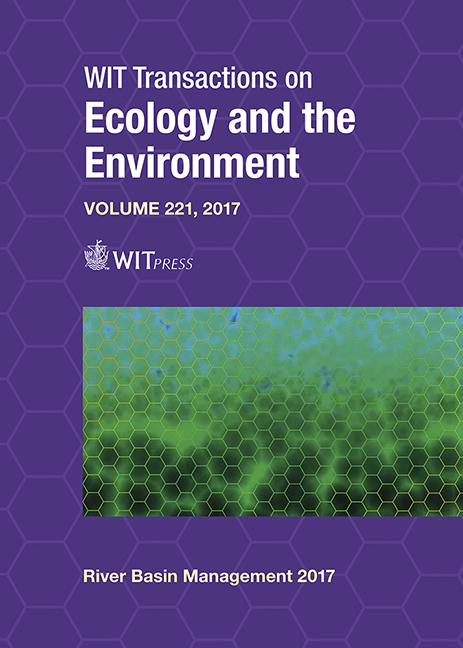A GROUNDWATER ARTIFICIAL RECHARGE MANAGEMENT TOOL: A CASE STUDY OF THE DRAVA RIVER IN MARIBOR, SLOVENIA
Price
Free (open access)
Transaction
Volume
221
Pages
12
Page Range
85 - 96
Published
2017
Size
3,741 kb
Paper DOI
10.2495/RBM170101
Copyright
WIT Press
Author(s)
IRENA KOPAČ, MATEVŽ VREMEC, MIHA KRAČUN
Abstract
Slovenia is divided into two river basin districts: the Danube and the North Adriatic. The Vrbanski Plato aquifer, which presents both natural and artificial bank filtration from the river Drava, is a part of the Danube river basin district and is the most important water source for 14 municipalities in the northeast part of Slovenia. This public water supply system, managed by the Maribor Water Supply company, is the largest water supply system in Slovenia. This organized method of riverbank filtration in Slovenia began about 50 years ago in the Vrbanski Plato aquifer. The bank filtrated waters of the Drava River are used, which crosses an old geological riverbed of the city of Maribor. As the next step, four wells were constructed (in 1978) on the island in the river and this water was then filtrated via negative wells at a 250m distance from drinking water wells. This was the first step for managing the groundwater recharge, but a widening has been planned to protect this water resource from the possible influence of pollutants from the city’s side. In this area, we have had a well-organized groundwater monitoring for years. From this point of view, the Vrbanski Plato was very suitable for the case study in the FREEWAT project (FREE and open source software tools for WATer resource management), which is an EU HORIZON 2020 project. The FREEWAT platform is, at present, a large QGIS plugin, allowing a coupling of the power of the GIS geo-processing and post-processing tools in spatial data analysis with that of process-based simulation models. We used the QGIS/FREEWAT tool for building a groundwater model and to present the efficiency of the existing artificial groundwater recharge and to look at the plans. During the first half of the project and the preparation of the groundwater model, there was an incident with the spillage of heating oil in the area where the groundwater flow is divided both toward the wells and in the opposite direction. The division of the water changes its position as a function of the quantities of pumped water and the height of the impounded river, Drava. Within the activities of the FREEWAT project, we have tried to integrate in the process of groundwater modelling stakeholders for a broader understanding and effective water management.
Keywords
FREEWAT, open source and public domain software, HORIZON 2020, water resource management, Vrbanski Plato aquifer, induced riverbank filtration, artificial groundwater recharge





